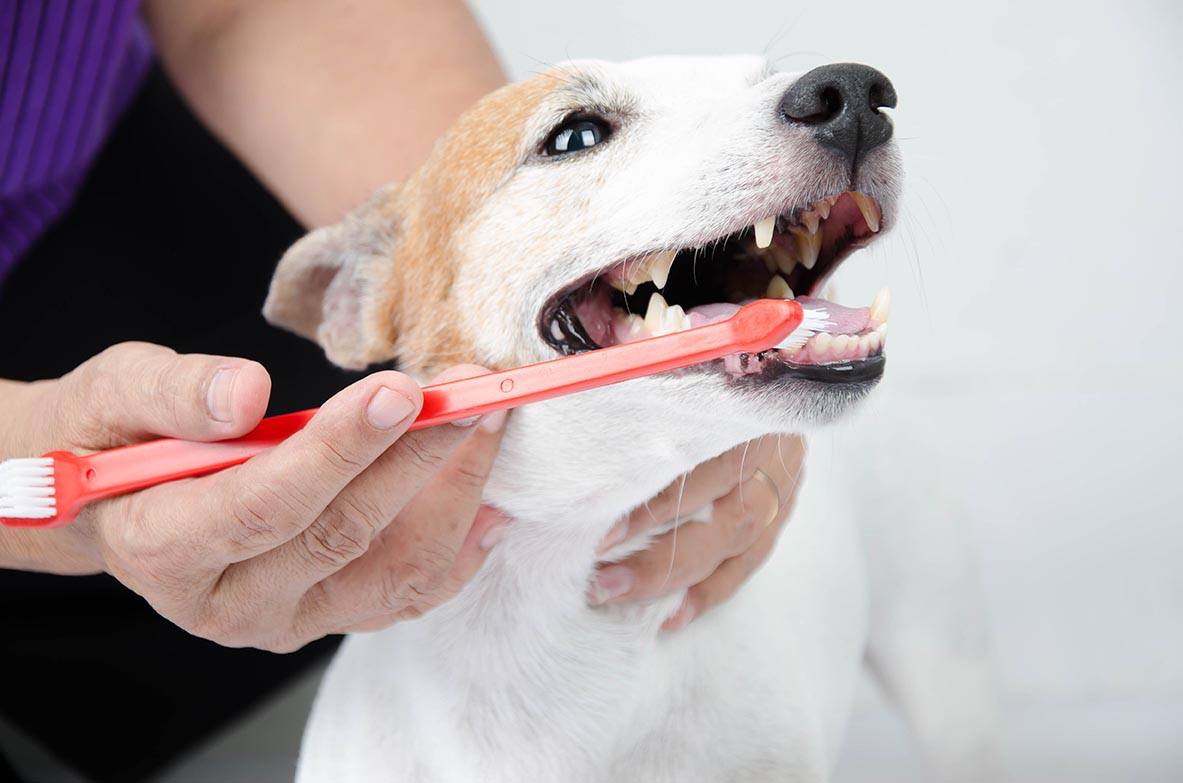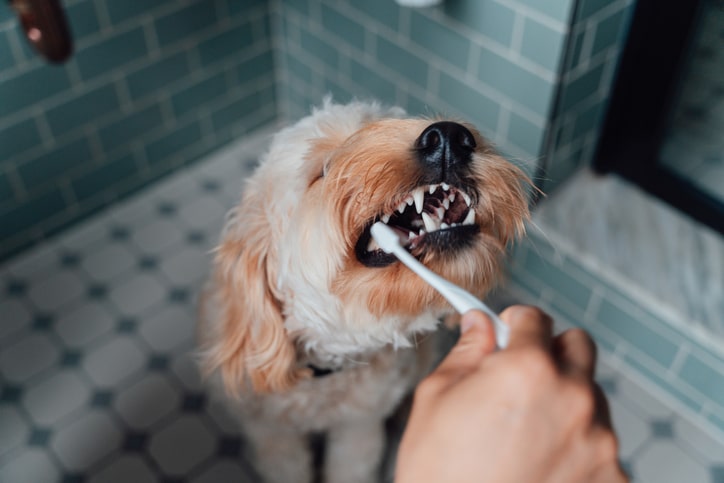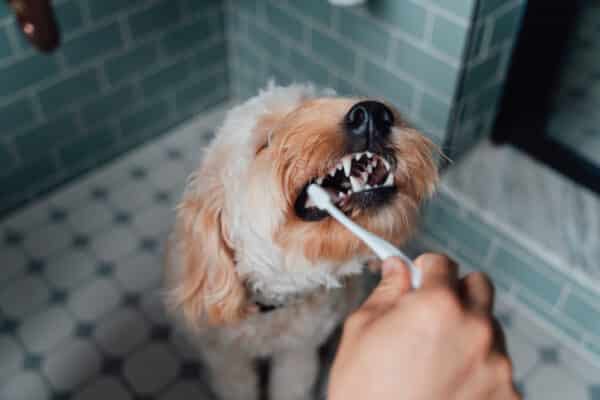Dental care is a big part of general health care for dogs — but it isn’t always an easy thing to accomplish for many pet parents.
Some dogs really don’t like their mouths handled, and sticking a toothbrush in there is nearly impossible. But there are options, ranging from dental wipes, gels and water additives to treats, powders and sprays.
Melissa Zangerle, VCA licensed veterinary technician and regional technician director, says it is very common for dogs to not like having their teeth brushed. She says common factors include dogs being head shy — meaning they can associate a hand reaching down from above toward their head with stress or discomfort — or they are just not used to having their teeth brushed or their mouths looked at or touched.
Alternatives to brushing dogs’ teeth with a toothbrush
Debra Decker, director of marketing for Pet King Brands, Inc., says there are many different types of dental products on the market such as toothpastes, water additives, sprays, dental wipes, treats and even diets to promote good dental health.
“Brushing a dog’s teeth is the method most veterinarians recommend,” says Debra. “Yet, according to studies, such as one published by the Journal of Veterinary Dentistry, only 2 percent of pet parents practice daily care brushing of their pet’s teeth. This can be due to busy lifestyles, lack of pet acceptance or a pet parent uneducated on the importance of providing daily oral care.”
She says that in addition to yearly dental cleaning by a veterinarian, establishing a consistent routine is best. For many that means finding a product or mix of products that are easy to use for both pets and their parents.

The Top 6 Dog Dental Alternatives to Brushing Your Dog’s Teeth
Take a look at these six dog dental products and see if they might make your dog comfortable and clean his teetch.
- Water additives are just what they sound like — they are added to water, requiring no hands in mouths.
- Dental sprays do require some interaction with your dog’s mouth, but some dogs may be OK with this since it’s still quicker than brushing.
- Dental gels might work for dogs who don’t appreciate sprays, and can also be used without brushing for some products. When your dog licks his or her lips, this will help the gel coat their teeth and gums.
- Dental wipes can be useful for dogs who don’t mind your fingers but still don’t want a toothbrush.
- Dental powders can be used as a food supplement. The powder is sprinkled over a dog’s wet or dry food once a day, and results are usually seen between three to eight weeks.
- Dental treats may work for dogs who don’t like anything added to their food or water.
Debra from Pet King Brands says not having to brush your dog’s teeth makes it easier for the pet parent to administer and for the dog to accept at-home dental care, which in the long run can increase consistency.
“When establishing a dental routine that can be adhered to, it’s important to not rely just on dental chews,” says Debra. “Many pet parents like dental chews because they are easy to give and can be used as a reward with dental benefits, but it’s best if it’s not the only thing done for a dog’s dental health. Taking a multi-pronged approach is often recommended by veterinarians.”
The best way to brush dogs’ teeth
If you are able to brush your dog’s teeth, the best way to do it is by:
- Using a dog toothpaste (never human toothpaste)
- Brush all surfaces of each tooth in either a back-and-forth motion, or up-and-down motion, says Melissa.
- If this isn’t possible, as long as you are using a dog toothpaste consistently (ideally once daily), it will still benefit your pup’s teeth whether you use a toothbrush or your finger.
The key is making your dog comfortable. “The biggest tip is training them to become more used to having their teeth brushed, with the hope they eventually even enjoy it,” says Melissa. “The younger you can start this positive association, the better. This way they become used to having their mouths touched and played with.”
While brushing is considered best for proper dog dental care, this isn’t always possible. Many useful options to dog teeth brushing are available for pet parents. Whatever you choose, do it every day and try to use multiple methods that your dog will accept.










